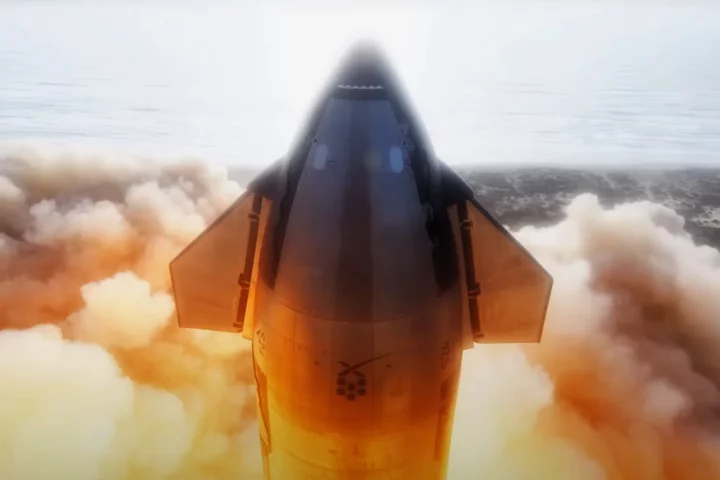
SpaceX launch of Starship rocket on hold amid ‘mishap investigation’
SpaceX will not be cleared to launch its 400-foot-tall (121 metre) Starship rocket until a “mishap investigation” is completed, regulators have said. A statement from the Federal Aviation Administration (FAA) warned of a launch delay for the biggest rocket ever built, just hours after SpaceX boss Elon Musk said the craft was “ready to launch” on Wednesday. SpaceX made its first and only attempt at an orbital Starship launch in April, with the rocket exploding over the Gulf of Mexico just three minutes into the 90 minute flight. The crewless rocket broke up into pieces over an empty stretch of water, however the debris blast created by Starship’s huge engines at its launchpad drew heavy scrutiny from regulators. Concrete dust drifted more than 10 kilometres from the launch site, according to the Fish and Wildlife Service, while concrete chunks and metal shards were discovered within a 700-acre zone surrounding the pad. SpaceX claimed the mission was a success, as Starship and its Super Heavy booster were able to lift off on its maiden test flight, however the FAA launched an investigation soon afterwards. Following Mr Musk’s latest comments that the latest version of the rocket is ready to launch pending regulatory approval, the FAA warned SpaceX that it would need to wait for the investigation to conclude. “The SpaceX Starship mishap investigation remains open,” the FAA said in a statement. “The FAA will not authorise another Starship launch until SpaceX implements the corrective actions identified during the mishap investigation and demonstrates compliance with all the regulatory requirements of the licence modification process.” SpaceX has made numerous alterations and improvements to Starship and its launch pad, including remedial measures aimed at preventing launch debris and a new method for separating the upper stage from its booster rocket. Nasa has already awarded SpaceX a multi-billion dollar contract to develop Starship for its Artemis program, which aims to return humans to the surface of the Moon for the first time in more than 50 years. Mr Musk also plans to use the rockets for more ambitious longer term goals, including establishing a permanent human colony on Mars before 2050. “As the most powerful launch system ever developed, Starship will be able to carry up to 100 people on long-duration, interplanetary flights,” SpaceX notes on its website. “Starship will also help enable transport of many satellites, large space telescopes, and significant amounts of cargo to Earth orbit, the Moon, Mars and beyond.” Read More ‘It’s becoming like an airport’: How SpaceX normalised rocket launches SpaceX abandons YouTube for live streams of launches in favour of X/Twitter Starship ‘ready to launch’, Elon Musk says SpaceX crew streak across sky before splashing down off Florida coast SpaceX smashes rocket launch record as Musk eyes historic Starship mission
2023-09-07 21:49
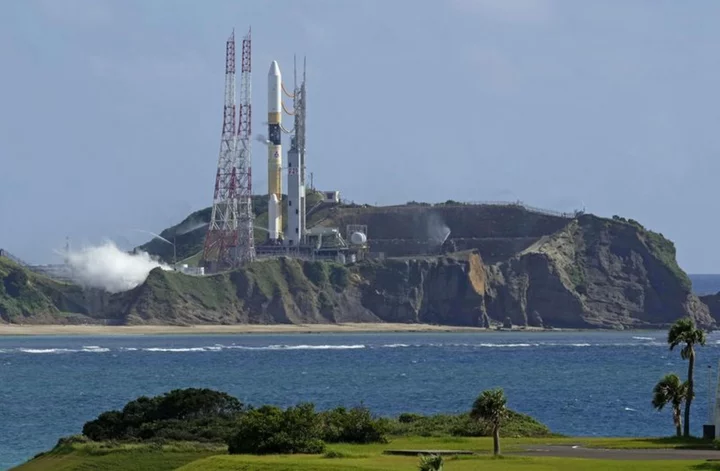
Japan launches rocket carrying moon lander SLIM after three delays
By Kantaro Komiya TOKYO (Reuters) -Japan launched its lunar exploration spacecraft on Thursday aboard a homegrown H-IIA rocket, clearing a
2023-09-07 09:26
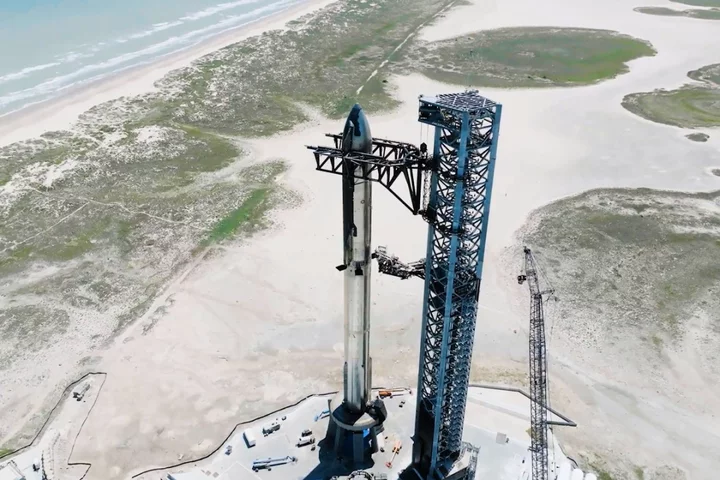
Starship ‘ready to launch’, Elon Musk says
SpaceX is ready to launch its next-generation Starship rocket, according to Elon Musk, pending regulatory approval. Starship is the most powerful rocket ever built, measuring 121 metres in height and capable of producing 5,000 metric tons of thrust. Once testing is complete, the craft will form part of Nasa’s Artemis mission to return astronauts to the Moon. Mr Musk also plans to use the rocket to transport people and cargo around the solar system, eventually using fleets of Starships to establish a permanent human colony on Mars. The next launch will be the second attempt at an orbital flight test, with the only previous effort ending in an explosion just three minutes into the 90 minute flight earlier this year. Each launch attempt requires approval from the US Federal Aviation Administration (FAA), while also requiring favourable weather conditions. “Starship is ready to launch, awaiting FAA licence approval,” Mr Musk posted on X, formerly known as Twitter, on Wednesday. A spokesperson for the FAA previously told The Independent that the launch licence application for Starship depends on various requirements being met, including reviews on policy, payload, safety, airspace integration, financial responsibility and environmental impacts. “The FAA will make a licence determination only after the agency is satisfied SpaceX meets all licensing, safety and other regulatory requirements,” the spokesperson said. SpaceX typically only reveals the date for rocket tests a few days before they take place, though numerous factors can still delay them. Weather at SpaceX’s Starbase facility in Texas is currently favourable for a launch, though the area can be prone to storms and hurricanes between June and November. SpaceX performed its 62nd orbital rocket launch of 2023 earlier this week, breaking its own record for the most number of launches in a single year. The private company has delivered roughly 80 per cent of all Earth payload mass to orbit in 2023, with Mr Musk predicting that this figure will rise to more than 99 per cent once Starship is in operation. “These magnitudes are madness to consider, but necessary to make consciousness multiplanetary,” he posted on X on Sunday. Read More SpaceX smashes rocket launch record as Musk eyes historic Starship mission SpaceX abandons YouTube for live streams of launches in favour of X/Twitter
2023-09-06 18:26

Elon Musk borrowed $1 billion from SpaceX in same month of Twitter deal - WSJ
(Reuters) -Elon Musk withdrew a loan of $1 billion from SpaceX - the two-decade-old rocket company run by the billionaire
2023-09-06 11:18
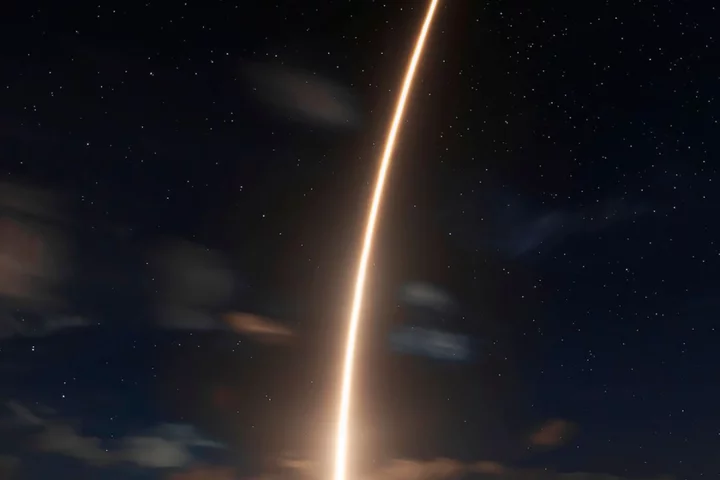
SpaceX smashes rocket launch record as Musk eyes historic Starship mission
SpaceX has broken its own record for the number of launches in a single year with its 62nd rocket sent into space on Sunday. A Falcon 9 carrying Starlink internet satellites lifted off from Nasa’s Kennedy Space Center in Cape Canaveral, Florida, at 10.47pm local time, surpassing the previous milestone of 61 launches set in 2022. It was the 10th flight for the first stage booster rocket, with SpaceX also breaking a separate record earlier this year for launching reused rockets. The Falcon 9 rocket landed on a drone ship in the Atlantic Ocean after delivering the Starlink satellites into low-Earth orbit. SpaceX boss Elon Musk said SpaceX could complete up to 100 rocket launches this year, making the private space firm by far the most prolific company or space agency to send payloads into space. “SpaceX has delivered ~80 per cent of all Earth payload mass to orbit in 2023. China is ~10 per cent and rest of world other ~10 per cent,” Mr Musk posted on X, formerly known as Twitter. “Based on the Falcon launch plan for next year, SpaceX will deliver ~90 per cent of all Earth payload to orbit. Starship will take that to >99 per cent in future years. These magnitudes are madness to consider, but necessary to make consciousness multiplanetary.” SpaceX’s Starship is the largest and most powerful rocket ever built – measuring 121 metres in height and with a thrust of 5,000 metric tons – but is yet to successfully complete an orbital flight. Following a successful high-altitude flight test in 2021, SpaceX attempted a 90 minute orbital flight earlier this year but it exploded just three minutes into the flight. The next attempt is expected to take place this month, though no exact date has been set. More than 1,000 design changes have been made to the craft since the first failed attempt, including new venting systems and heat shields to improve the stage separation of the upper and lower stages of the rocket. The US Federal Aviation Administration (FAA) is yet to grant a launch licence for the latest mission amid concerns about issues revealed in the first orbital launch attempt. SpaceX has already secured a multi-billion dollar deal with Nasa to keep developing Starship for use on the US space agency’s Artemis mission, which aims to return astronauts to the Moon this decade. Mr Musk has previously said that Starship is integral to his plans to turn humanity into a multi-planetary species, with the aim of deploying a fleet of Starships to establish a permanent colony on Mars before 2050. Read More ‘It’s like an airport’: How SpaceX normalised rocket launches SpaceX crew streak across sky before splashing down off Florida coast Watch live: SpaceX launches satellites for US Space Development Agency Elon Musk’s SpaceX sued over allegations of hiring discrimination
2023-09-04 23:27
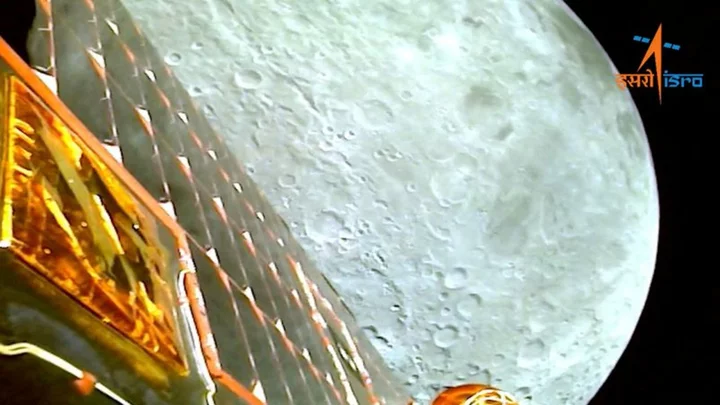
Mission accomplished, India puts moon rover to 'sleep'
By Arpan Chaturvedi NEW DELHI India switched off its moon rover, the first craft to reach the lunar
2023-09-03 16:45

Scientists have found materials in the sea from outside Solar System, controversial Harvard professor claims
Scientists have found material from outside of our solar system for the first ever time, according to a controversial Harvard Professor. The “spheres” were found in the Pacific Ocean in June. But early analysis has now indicated that the material came from outside of our solar system, carried by an interstellar object that crashed into the Earth in 2014, according to Avi Loeb, a theoretical astrophysicist at Harvard University. The material could even be of “extraterrestrial technological origin” because of some unusual characteristics of the material, he said. Professor Loeb has previously claimed that the asteroid may have been artificial, such as an alien spacecraft. “This is a historic discovery because it represents the first time that scientists analyze materials from a large object that arrived to Earth from outside the solar system,” Professor Loeb wrote in his announcement. Professor Loeb has made a number of claims about potential extraterrestrial life and visitors from other solar systems. While has made a number of contributions to astrophysics, he is perhaps best known for his suggestions that Oumuamua, the first interstellar object to visit our solar system, could have been an “alien probe”. His regular and often unusual claims have led to some censure from fellow scientists, who say that he is given to sensationalism and is damaging the usual process of discovery. His pronouncements can be attention-grabbing and undermine the usual work of science to check extraordinary claims with extraordinary evidence, they have said. “People are sick of hearing about Avi Loeb’s wild claims,” Steve Desch, an astrophysicist at Arizona State University, told The New York Times in July, when Professor Loeb revealed details of his search. “It’s polluting good science — conflating the good science we do with this ridiculous sensationalism and sucking all the oxygen out of the room.” Professor Loeb made the most recent claims on Medium, where he has been documenting his trip to the Pacific Ocean to collect materials. In recent years he has been taken with a fireball that fell to Earth in 2014 – and has been looking to collect any fragments from it. He has claimed that details about the fireball indicate that it had come from outside of our solar system. Those claims have proven controversial – though they have been accepted for publication in the prestigious Astrophysical Journal, after initially being rejected – because scientists have argued there is not significant enough proof to indicate it really was an interstellar visitor. Nonetheless, in recent months Professor Loeb and his team have been scouring the Pacific Ocean for any fragments from that object, and in June they announced that they had successfully gathered some examples. Those samples have since undergone testing by scientists. Now Professor Loeb says that analysis shows that the materials are “from a meter-size object that originated from outside the solar system”. A number of details about the material indicated that it was of interstellar origin, he said. He pointed particularly to the amount of beryllium, lanthanum and uranium (or BeLaU) in the objects. That set them apart from other samples not found in the path of the object – and also from objects that would normally be expected to have been formed on the Earth, the Moon or Mars, he said. Professor Loeb said he he was confident that more objects would be found like “IM1”, the name he has given to that object he claimed to be an interstellar visitor. He suggested that there could be “a few million such objects reside within the orbit of the Earth around the Sun at any given time” and that “some of them may represent technological space trash from other civilizations”. He also criticised those many scientists who have expressed scepticism about his claims, joking that he was “running away from colleagues who have strong opinions without seeking evidence, and I am running towards a higher intelligence in interstellar space” and saying that he wishes his critics “happiness and prosperity”. Read More We just received the first ever pictures taken near the Moon’s uncharted south pole Rare blue supermoon brightens the night sky this week India set to launch spacecraft to Sun after successful moon landing Rare blue supermoon brightens the night sky this week India set to launch spacecraft to Sun after successful moon landing Japan forced to suspend launch of historic first Moon lander
2023-08-30 00:53
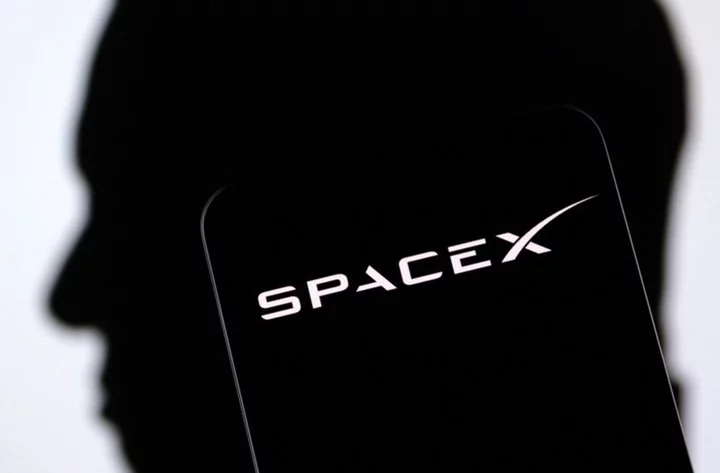
US sues SpaceX, alleges hiring discrimination against asylum seekers, refugees
By Kanishka Singh WASHINGTON (Reuters) -The U.S. Justice Department sued Elon Musk-owned rocket and satellite company SpaceX on Thursday for
2023-08-25 01:59

Mysterious ‘dark spot’ on Neptune seen from Earth for the first time
Scientists have seen one of the mysterious “dark spots” on Neptune from Earth for the first ever time. Researchers spotted the feature using the European Southern Observatory’s Very Large Telescope, or VLT. Using that telescope, astronomers were able to examine a large dark spot – which was joined by a smaller, bright spot, they said, of a kind that has never seen before. Scientists still do not know why those spots form on Neptune’s blue atmosphere. But they hope that the new observations could help answer questions about their origin. “Since the first discovery of a dark spot, I’ve always wondered what these short-lived and elusive dark features are,” said Patrick Irwin, professor at the University of Oxford and lead investigator of the study. It has already helped rule out one possibility: that the dark spots are caused when the clouds on the planet clear. The observations instead suggest that the spot is formed when air particles make a layer below the main one go darker, caused by ice and haze mixing in the atmosphere. Understanding the spots has been difficult because they leave the planet’s surface as mysteriously as they arise. They have also been difficult for researchers to actually examine, given the difficulty of spotting them through telescopes. Previously, scientists were forced to send spacecraft to see the spots, and the first was observed in 1989, when Nasa’s Voyager 2 flew past. It disappeared a few years later. In recent years, scientists have been able to examine them with the Hubble Space Telescope, which has seen more spots on the atmosphere. When it did so, astronomers were able to point ground-based telescopes towards them, allowing for more detailed research. “This is an astounding increase in humanity’s ability to observe the cosmos,” said Michael Wong, a researcher at the University of California, Berkeley and a co-author on the paper. “At first, we could only detect these spots by sending a spacecraft there, like Voyager. “Then we gained the ability to make them out remotely with Hubble. Finally, technology has advanced to enable this from the ground.” The new observations allowed scientists to examine the spot using the VLT’s Multi Unit Spectroscopic Explorer, which let them split the light from Neptune and the spot into its component colours. That in turn means that astronomers can understand the height at which the spot sits, and how the atmosphere is composed. As well as helping examine the dark spots, scientists also saw a surprise result: another, entirely new kind of bright spot. “In the process we discovered a rare deep bright cloud type that had never been identified before, even from space,” said Wong. The work is described in a new paper, ‘Cloud structure of dark spots and storms in Neptune’s atmosphere’, published in Nature Astronomy. Read More Mysterious dark spot on Neptune detected from Earth for the first time We just received the first ever pictures taken near the Moon’s uncharted south pole Chandrayaan-3 mission rover exits Moon lander to explore lunar south pole Mysterious dark spot on Neptune detected from Earth for the first time We just received the first ever pictures taken near the Moon’s uncharted south pole Chandrayaan-3 mission rover exits Moon lander to explore lunar south pole
2023-08-24 23:27

Chandrayaan-3 rover rolls onto moon's surface as ecstatic India celebrates
By YP Rajesh, Sakshi Dayal NEW DELHI (Reuters) -The moon rover of India's Chandrayaan-3 exited the spacecraft on Thursday to
2023-08-24 17:26

Fort Solis Cast
Fort Solis' cast looks promising.
2023-08-24 04:50
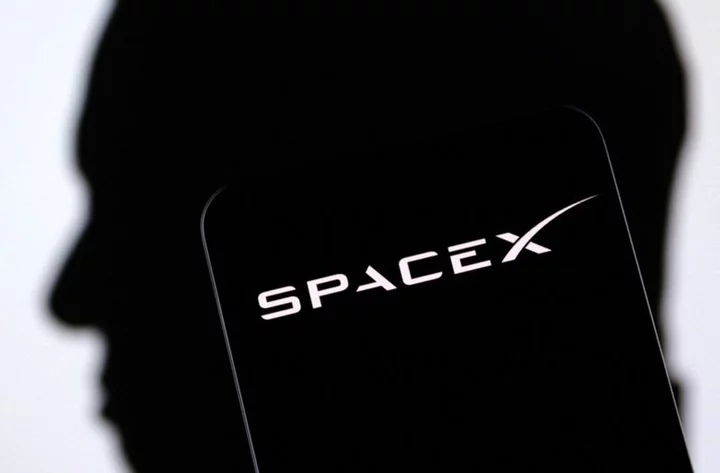
SpaceX working with Cloudflare to speed up Starlink service- The Information
(Reuters) -Elon Musk-owned SpaceX is working with Cloudflare to boost the performance of its satellite internet service Starlink, the Information
2023-08-24 03:55
